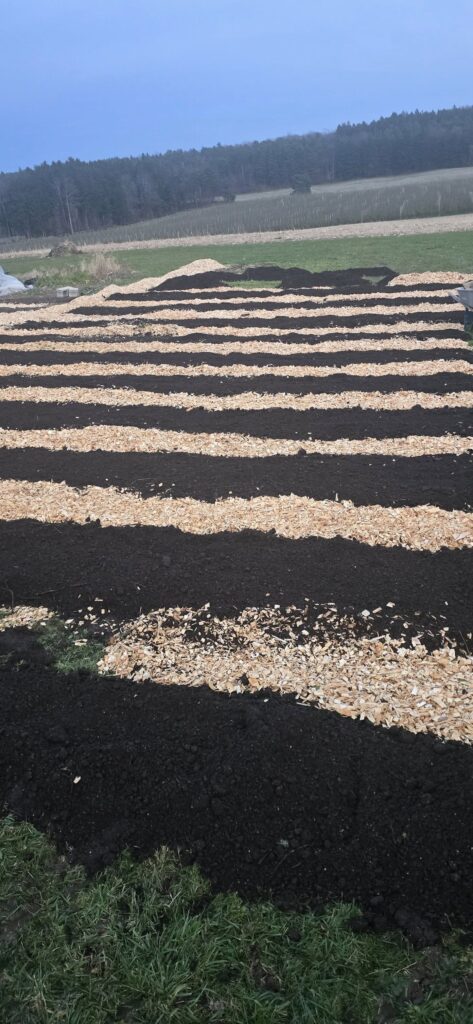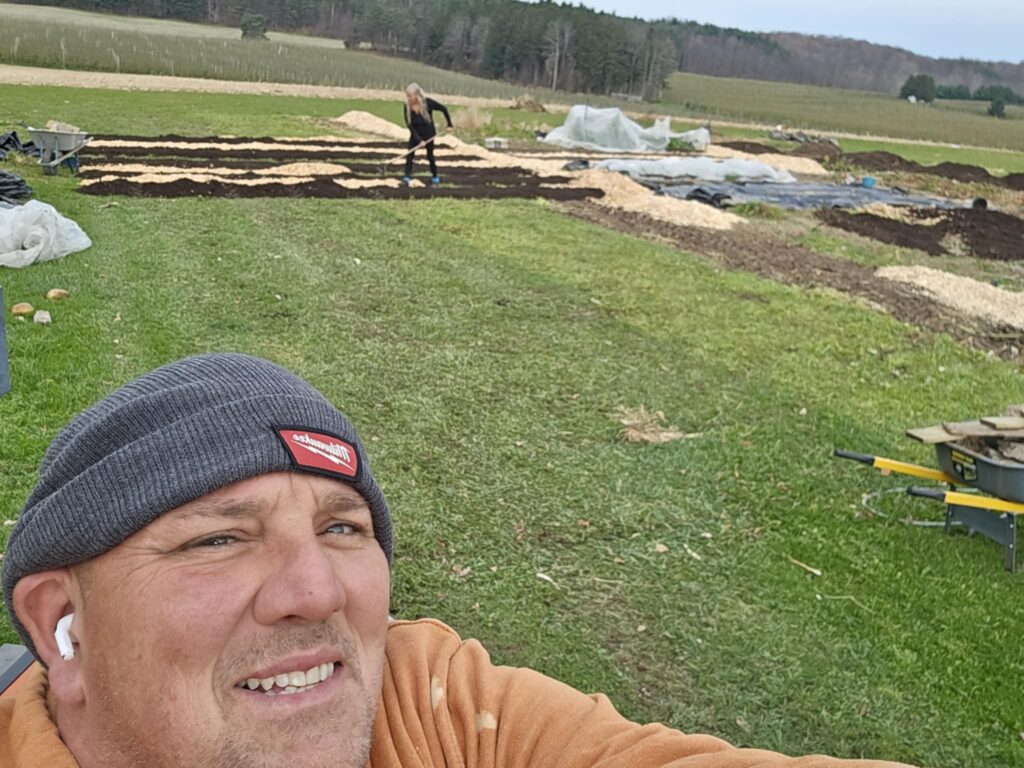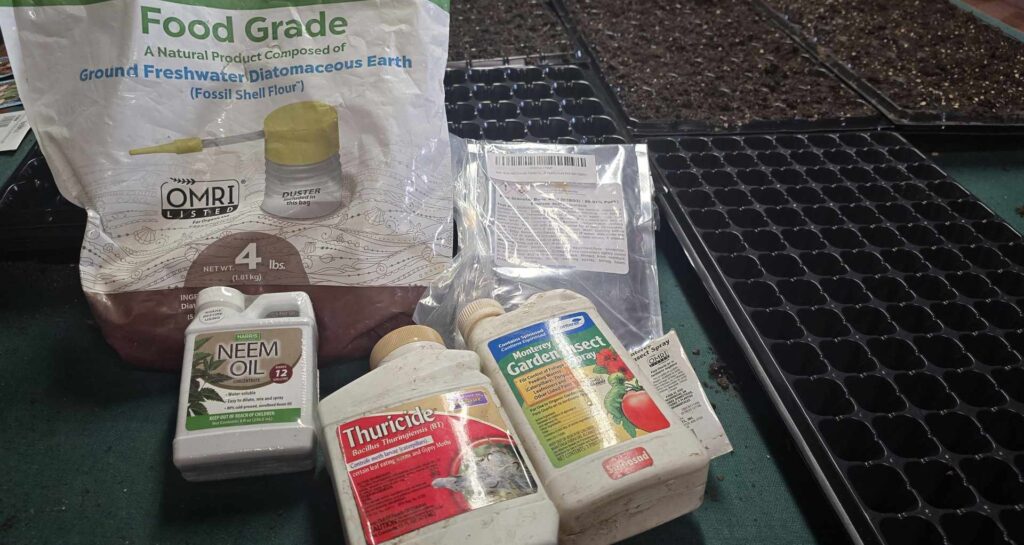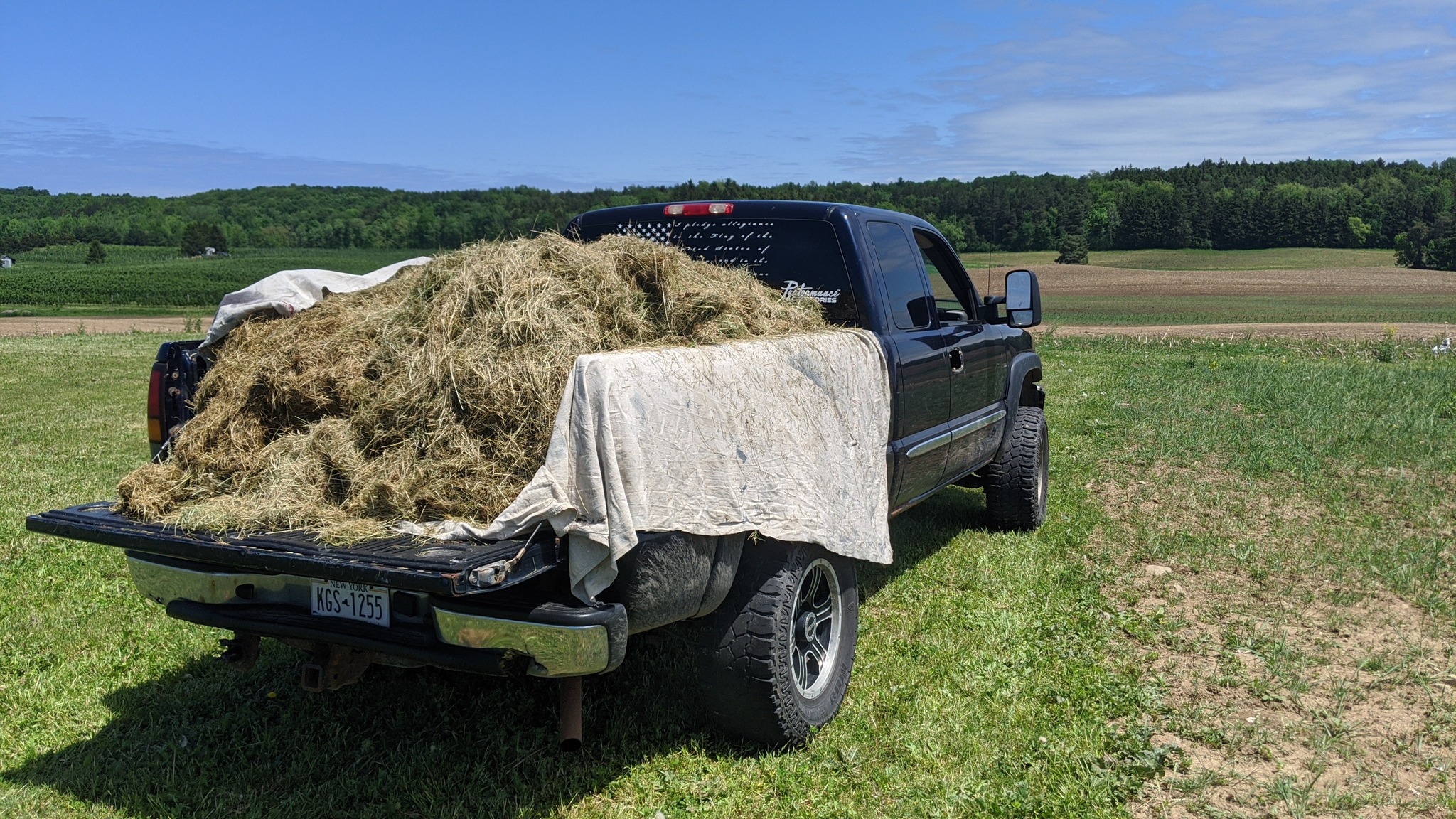🌱 Poison-Free Pest Control: How We Keep Our Farm Thriving Without Toxic Pesticides! 🌿🐞
At M & M Poison-Free Farms, we are committed to growing food that nourishes the body, protects beneficial insects, and heals the earth. That means we never use poisons on our farm.
I am a regenerative, organic, no-dig, market gardener. I’ve been implementing earth-friendly practices for the past five years and have had so much success at growing abundant and healthy produce that I love to share practices that have worked for me. In my experience, regenerative, no-dig, sustainable, and “better than organic” practices produces more produce (by at least 25%) over convential practices – and it takes up less space to do it.

🌿🐞🌱
We don’t need poison to grow an amazing harvest. There are many effective methods to solve pest pressure without poisoning the Earth. One of the best ways to avoid pesticides, and one most people don’t realize, is through healthy, living soil and landrace plants (plants that have adapted to the local environment and pests).
How No-Dig & No-Till Gardening Protects & Builds Soil Health
If you want richer, healthier soil that practically grows food for you, stop digging! No-dig and no-till gardening protect soil life, improve structure, and naturally build fertility over time. Here’s how:
Protecting Soil Life = Healthier Plants
Soil is not just dirt—it’s a living ecosystem filled with beneficial microbes, fungi, earthworms, and bacteria. These tiny organisms are constantly at work, breaking down organic matter into nutrients that plants can absorb. Fungi create underground networks that help plants exchange nutrients, while earthworms aerate the soil and improve drainage.
Tilling and digging destroy this ecosystem by exposing delicate microbes to air and sun, breaking up fungal networks, and killing earthworms. By leaving the soil undisturbed, you allow these natural processes to continue, resulting in healthier, more resilient plants.
🌿🐞🌱
Preserving Soil Structure = Better Water Retention & Drainage
When soil is left undisturbed, it naturally develops good structure over time. Worms and fungi create tunnels that allow air and water to move freely, and soil particles form small clumps (aggregates) that hold moisture while improving drainage. This means plants get consistent water and oxygen without becoming waterlogged or drying out too quickly.
Tilling disrupts this structure by smashing aggregates and compacting the soil. While it may seem like it’s loosening the soil initially, tilled soil quickly becomes hard and compacted when it rains, making it difficult for plant roots to access water and nutrients.
Building Fertility Naturally = Less Dependence on Fertilizers
In a no-dig system, soil fertility improves naturally through compost, mulch, and organic matter breaking down over time. When you add compost or mulch on top, it feeds the worms, fungi, and microbes below, gradually enriching the soil without disturbing it. This creates a self-sustaining cycle where nutrients are always available to plants without the need for synthetic fertilizers.
Tilling, on the other hand, burns through organic matter too quickly by exposing it to excess oxygen, causing it to break down before plants can use it. This leads to nutrient depletion, forcing gardeners to rely on constant fertilization.
🌿🐞🌱
Less Work, More Resilient Soil

🌿🐞🌱
No-dig gardening is not only better for the soil—it’s easier on the gardener. Without the need for heavy tilling or digging, you simply add organic matter on top. We start with four inches of compost and then add a yearly topping of an inch compost. Then, we let nature do the work, and enjoy less weeding, better water retention, and stronger plants. Over time, no-dig soil becomes incredibly soft, rich, and easy to plant in, without ever having to turn it over.
By protecting soil life, maintaining structure, and naturally building fertility, no-dig gardening creates healthier, more resilient soil that grows better food with less effort. Instead of fighting against nature, you’re working with it—leading to stronger plants, better harvests, and a thriving ecosystem right under your feet. 🌱✨
Choose Disease Resistant Plants
Choosing plants that are resistant to certain pests is one way to reduce the need for pesticides is the first step. Heirloom varities are great for creating landrace plants acclimated for your specific microenvironment. By collecting the best specimens from the best plants we naturally build up an immunity to the local pest problems. Companion planting is another very effective way at reducing pest populations without pesticides. Marigolds are great at thwarting nemotodes and nasturitums draw pests away from plants by acting as a trap crop.
🌿🐞🌱
Be Prepared with an Organic Arsenal
Last but not least, is an arsenal full of organic solutions that don’t harm the Earth, the pollinators, or us humans. At the beginning of the growing season, I make sure I have all the following in stock:

🦋 Bacillus thuringiensis (B.t.) – Targets Caterpillars, Leaves Pollinators Unharmed
What it kills:
✔ Cabbage worms
✔ Tomato hornworms
✔ Loopers
✔ Other leaf-eating caterpillars
B.t. is a naturally occurring soil bacteria that only affects the stomachs of caterpillars and leaf-chewing larvae, causing them to stop feeding. It does not harm bees, butterflies, ladybugs, or mammals—just the pests that eat your crops!
🐜 Spinosad – Effective for Mites, Thrips & Beetles
What it kills:
✔ Broad mites
✔ Thrips
✔ Flea beetles
✔ Fire ants
✔ Leafminers
Spinosad is a naturally derived bacteria that disrupts the nervous system of certain pests. It works well on a variety of insects but must be applied carefully—it can harm bees if sprayed directly on them, so we always apply it in the evening when pollinators aren’t active.
🌿 Neem Oil – A Natural Insect Growth Disruptor
What it kills:
✔ Aphids
✔ Whiteflies
✔ Spider mites
✔ Scale insects
✔ Leafhoppers
Neem oil, extracted from the neem tree, acts as a natural repellent, antifungal, and insect growth disruptor. It prevents pests from feeding and laying eggs, gradually reducing their population. We apply it after sunset to avoid harming bees and other beneficial insects.
🐌 Diatomaceous Earth (D.E.) – Deadly for Soft-Bodied Pests
What it kills:
✔ Slugs
✔ Snails
✔ Hard-bodied insects (beetles, ants, cockroaches, etc.)
D.E. is made from fossilized algae and works by dehydrating insects that crawl over it. Unlike chemical pesticides, it poses no risk to humans or the environment—but is lethal to soft-bodied pests like slugs and beetles. We sprinkle it around plant bases and problem areas to stop infestations before they start.
Another way to stop problems before they start is by using homemade bug brews: cayenne pepper, garlic, and a teaspoon of dish soap in a gallon of water is a serious deterrent to animals and bugs alike.
Boric Acid & Honey for Aphid-Farming Ants 🐜🍯
Aphid-farming ants protect aphids to harvest their honeydew, so to get rid of them, you need to eliminate the colony. A boric acid + honey bait works by attracting the ants, letting them carry the poison back to the nest, and wiping out the entire colony over time.
How to Make It:
✔ 1 tbsp honey (or sugar water)
✔ 1/2 tsp boric acid (too much will repel them!)
✔ Mix well and place on small bottle caps or wax paper near ant trails
✔ Place an upside down yogurt container over the bottle cap to protect from the rain. Make sure to cut an entrance for the jerk ants first.
How It Works:
🐜 Ants take the bait back to the colony
🛑 Kills workers & the queen slowly, preventing suspicion
💀 Without ants protecting them, aphids become easy to remove
Pro Tip: Pair this with neem oil or insecticidal soap on plants to control aphids directly while the bait takes out the ants.
🛑 Row Covers & Predatory Insects – Nature’s Best Defense
Preventative measures:
✔ Floating row covers protect young plants from pests before they become a problem.
✔ Companion planting attracts beneficial insects and repels harmful ones.
✔ Introducing predatory insects like ladybugs, lacewings, and praying mantises keeps pest populations in check naturally.
🌱 Pest-Resistant Plants – Nature’s Built-In Protection
Some plants naturally fight off pests due to their genetics, chemical defenses, or physical structures. We incorporate these into our farm to reduce pest pressure even further!
Examples of pest-resistant plants and what they fight off:
✔ Glass Gem Corn & Traditional Maize – Resistant to corn borers & rootworms due to strong stalks & deep roots.
✔ Marigolds – Repel nematodes, aphids, and whiteflies with their natural scent and root chemicals.
✔ Collards & Kale (Certain Varieties) – More resistant to cabbage worms & aphids than cabbage due to tougher leaves.
✔ Wild-Type & Some Heirloom Tomatoes – More resistant to hornworms & aphids due to natural alkaloids in the leaves.
✔ Thai & African Eggplant – More resistant to flea beetles than standard varieties.
✔ Cowpeas & Certain Beans – Naturally deter weevils & beetles better than common beans.
✔ Hot Peppers (Capsaicin Power!) – Naturally repel many insects, deer, and rabbits.
✔ Herbs like Basil, Rosemary, and Mint – Repel mosquitoes, aphids, and certain beetles with strong essential oils.
🌎 Regenerative & Organic is Best
💡 Farming without poisons is possible, and we’re proving it every day. By choosing natural pest control, we protect the health of our families, our food, and our planet—without sacrificing crop quality or yield. In fact, mimicing nature ensures we have a much better and larger harvest.
Want to support poison-free farming? Follow us for updates, tips, and farm-fresh produce! 🌱✨
#PoisonFreeFarms #SustainableFarming #OrganicPestControl #HealthySoilHealthyFood #NoPoisons #RegenerativeFarming


